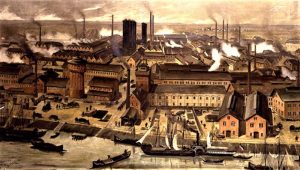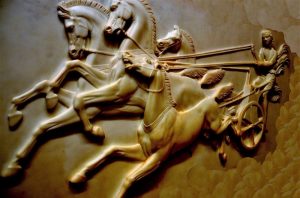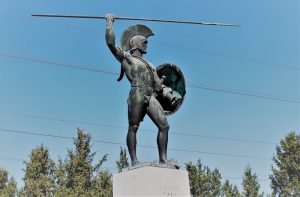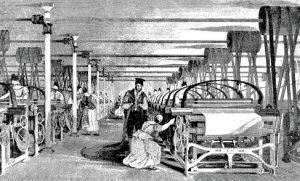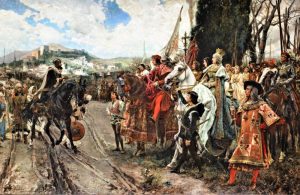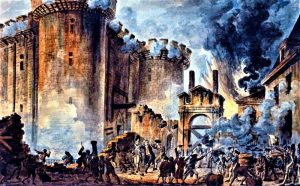Second Industrial Revolution
The Second Industrial Revolution was another of the great and important advances in technology and society. New innovations in the production of steel, oil and electricity led to the introduction of automobiles and public airplanes. Historians have labeled the years 1870 to 1914 as the period of the Second Industrial Revolution. Many of the changes that occurred during this period had to do with new products simply replacing the old ones.
What was the Second Industrial Revolution?
It was the second phase of the Industrial Revolution which involved a large number of changes and developments in chemical, electrical, oil and steel industries. It was a time of change and progress that increased global technology.
- About the Second Industrial Revolution
- Characteristics
- History
- Stages of the Second Industrial Revolution
- Where it developed
- Causes
- Consequences of the Second Industrial Revolution
- Social changes
- Inventions
- Sources of energy
- Transport
- Representatives
- Advantages of the Second Industrial Revolution
- Disadvantages
- Importance
About the Second Industrial Revolution
It is considered the second phase of the Industrial Revolution and consisted of a series of developments in chemical, electrical, oil and steel industries. Different types of machines were introduced, and the aircraft was developed. It was considered a phase of the first revolution because there was no rupture between the two of them, since the second revolution came to strengthen and perfect what had already been created in the First Industrial Revolution.
Characteristics
The main characteristics of the Second Industrial Revolution were the following:
- Iron was replaced by steel in industry.
- Steam was replaced by electricity and petroleum products were used as an important source of energy.
- Automatic machinery was introduced to manage and operate other machines.
- There were important changes in transportation and communications.
- Application of science to industry.
- New forms of capitalist organization were created: imperialism, mechanization and big industry.
- Electricity was discovered.
- Existing machines were automated.
- The airplane was invented.
- Darwin’s theory of the evolution of species emerged.
History
The history of this revolution begins with the first phase of industrialization of England and its extension to other countries such as Europe, USA and Japan, where it began a new cycle that lasted until the outbreak of World War I in 1914, a period in which Britain lost its leadership to other powers.
Stages of the Second Industrial Revolution
The basic stages were the new sources of energy, the new industries and the new industrial organization.
Where it developed
The Second Industrial Revolution took place in Western Europe, the United States and Japan and took place between 1850-1870 and the beginning of the First World War in 1914.
Causes
The causes of this revolution were many. New sources of energy appeared such as oil and electricity, new alloys were discovered between iron, carbon and aluminum. The colonizers had acquired great fortunes through trade at sea and industries created monopolies and a lot of money. There was also interest in colonialism, which triggered conflicts that later led to the First World War.
In social terms, the causes were based on the emergence of the proletariat and the industrial bourgeoisie, in addition to the capitalism that produced the struggle between the social classes. There was overpopulation, environmental degradation, and many inventions and new technology emerged.
Consequences of the Second Industrial Revolution
The consequences of the Second Revolution were:
- Man was displaced by machines.
- Production and transport costs were lowered.
- Companies were created with new industrial techniques.
- The creation of large manufacturing centers mainly in the Metropolis.
- Machines were built and exported to industrialized countries.
- The industrial proletariat was born and confronted corporate capitalism, giving rise to social struggles.
- Neo-mercantilism
Social changes
As for society, there was an improvement in living conditions, the middle classes began, which also had some purchasing power. The spaces of socialization were initiated, education was institutionalized, and sport began to gain followers. The new social classes had their spaces of amusement that ranged from the halls to the opera.
Liberalism triumphed and with it, freedoms associated with democracy, which gave way to freedom of expression and printing, which together with the new techniques and machinery led to the emergence of the press. The advancement of literacy and education as the only vehicle for social advancement was achieved; the first educational systems and public schools emerged, especially in the Protestant world. Progressively, the secularization of society increased, becoming ever greater the separation Church-State.
Inventions
There were many inventions that arose during the Second Industrial Revolution, among them we can mention the following: the steam engine, the airplane, the telephone and telegraph, the automobiles and the light bulb.
Sources of energy
During the Second Industrial Revolution, new sources of energy were discovered that gave better results than those that existed, so electricity and oil were used. With the use of the petroleum they were able to invent the engines of explosion and this generated a great amount of new inventions in the industry. The use of iron was replaced by steel and the use of steam was replaced by petroleum derivatives.
Transport
Transportation and communication systems increased, and the electric railway and the boiler engine boat were born, which helped commerce. The airplane was initiated by the brothers Montgolfier and Giffard, who made flights in the aerostatic and dirigible balloons. Sometime later, the Wright brothers used the airplane, which began to be manipulated as a combat weapon after the First World War.
The development of the railroad was the great company of the XIX century and brought positive consequences for the economy facilitating the transfer of goods, export and import to other countries. From the industrial point of view, it boosted the production of rails, wagons and locomotives. Transport developed communications through road construction, and there was an increase in population.
Representatives
Among the main representatives of the Second Industrial Revolution we mention the following characters:
- Rudolf Diesel who perfected the explosion engine.
- Henry Bessemer who managed to make the first chemical manufacturing process.
- Thomas Alva Edison, researcher who developed in optics, acoustics and electricity. He created the incandescent filament lamp to obtain the light.
- Wilbur and Orville Wright, the inventors of the airplane.
- Alexander Graham Bell, inventor of the multiple telegraph and the telephone.
Advantages of the Second Industrial Revolution
Among the main advantages obtained as a result of the Second Revolution, we mention the following:
- New energy sources such as electricity and oil began to be used.
- The use of new materials began, and new industries were created.
- Production processes changed and new countries were added to the production of the world market.
- The foundations of technological system and a series of innovations that united science and industry were given.
- There was an important change in the leadership of the economy and important changes were made in companies, organizing them better and more scientifically.
- The big company was born, and the labor market
- Technological innovations, new materials and the chemical industry were developed improving the productive processes and economies of the countries.
Disadvantages
With the Second Industrial Revolution there was an increase in the size of the cities which brought a huge pollution in the environment due to the beginning of industries. There were truly deplorable conditions of work because the worker was exploited without mercy, which is why the unions began their functions.
There was more pressure on the land because the predatory market model of natural resources had been initiated. The beginning of what today are the world powers or industrial countries and the peripheral countries was given.
The machines replaced man at work, so that the workers only had to work on weekends to maintain the machines that did all the production, for a minimum wage.
Importance
The Second Industrial Revolution was very important because through it, jobs were generated, the industry was modernized, and high fashion was born because there was great technical textile development. Products were produced at a lower price and iron became cheaper as well as steel production. New sources of energy, industries, transport and telecommunications were created.
Financial capitalism and international trade also developed, and the British crown lost its supremacy, in addition to the many scientific and technological inventions such as the automobile and airplane.
How to cite this article?
Briceño V., Gabriela. (2019). Second Industrial Revolution. Recovered on 3 May, 2025, de Euston96: https://www.euston96.com/en/second-industrial-revolution/
